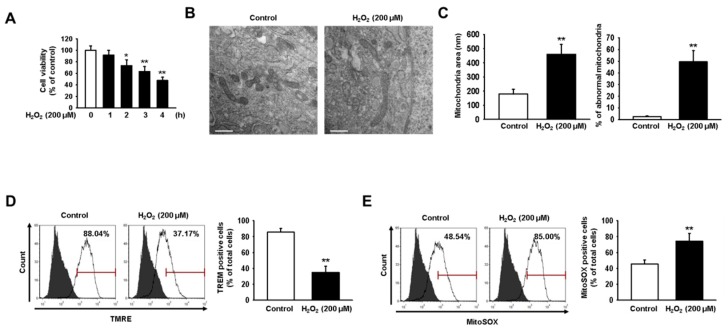Figure 1.
H2O2-induced oxidative stress reduces human mesenchymal stem cell (hMSC) viability by inducing mitochondrial dysfunction. (A) MTT assay was used to assess the viability of hMSCs treated with 200 μM H2O2 and that of untreated hMSCs. Values represent the mean ± SEM. * p < 0.05 or ** p < 0.01 vs. control. (B) Transmission electron microscopy (TEM) was used to evaluate mitochondrial morphology in hMSCs treated for 24 h with H2O2 (200 μM) and in untreated hMSCs. Scale bar = 500 nm. (C) Quantitative analyses of morphometric data and percentages of abnormal mitochondria showing swelling and severely disrupted cristae. Images were obtained using TEM. Values represent the mean ± SEM. ** p < 0.01 vs. control. (D) Tetramethylrhodamine, ethyl ester (TMRE)-positive hMSCs, with and without treatment using H2O2 (200 μM), were quantified via fluorescence-activated cell sorting (FACS). Values represent the mean ± SEM. ** p < 0.01 vs. control. (E) MitoSOX-positive hMSCs with and without treatment using H2O2 (200 μM) were quantified via FACS. Values represent the mean ± SEM. ** p < 0.01 vs. control.

